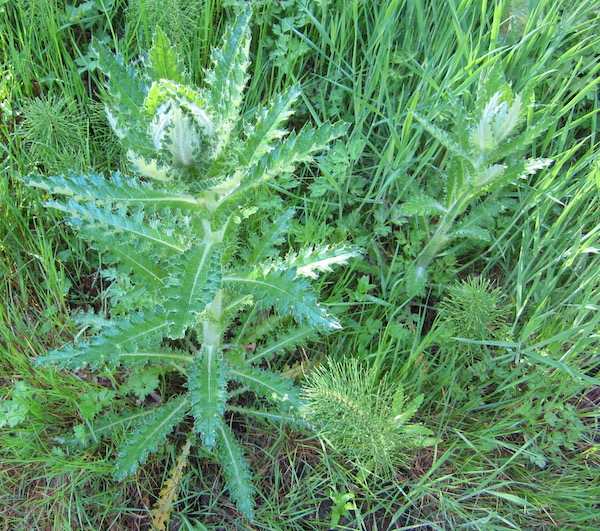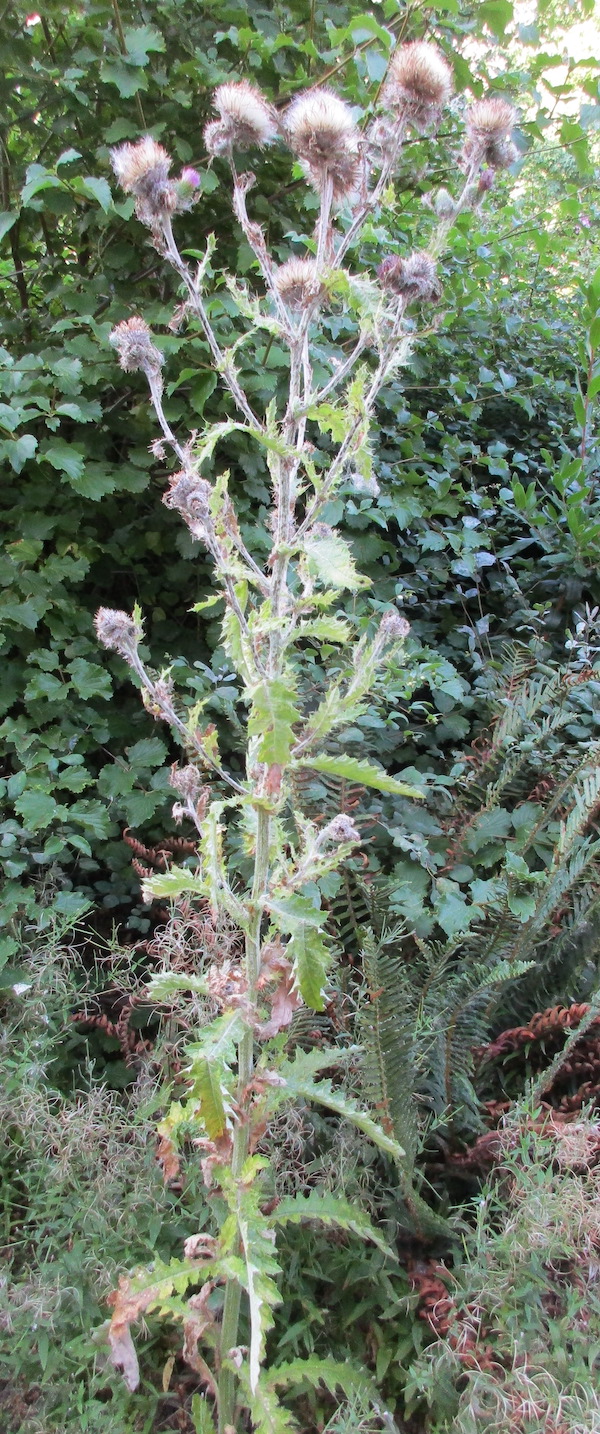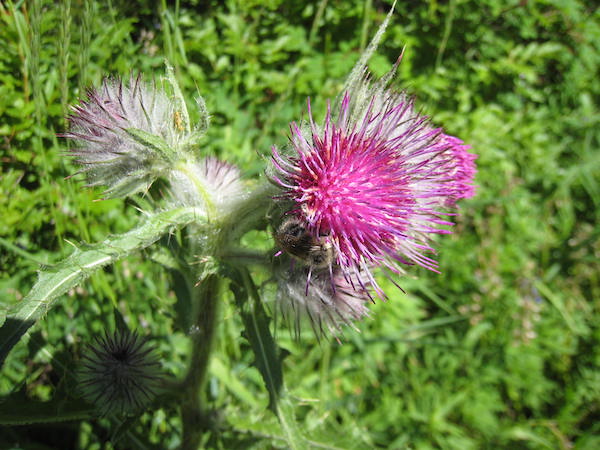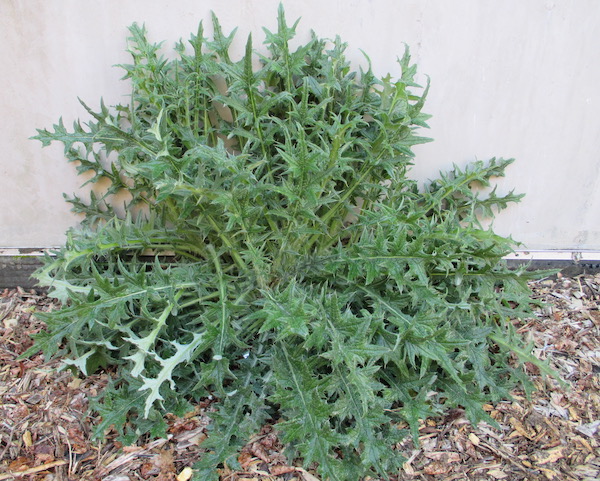| My book Wild Plants of Greater Seattle, in both editions, is mistaken about Seattle native thistles. This article clarifies the matter. |
| The ancient common name "thistle" is applied to many plants, in various genera, in widespread places. Originally, it applied to European, spiny plants in the sunflower family. Thistles, bristling with painful sharp spines, symbolize Scotland. Over the centuries, people have also applied the common name thistle to diverse plants that are more or less spiny --or even spineless. |
Seattle's four common thistles, all European, and weedy, are:
|
| Cirsium arvense var. horridum (Canada Thistle. Creeping Thistle) |
| Cirsium vulgare (Bull Thistle) |
| Sonchus asper (Prickly Sow-Thistle) |
Sonchus oleraceus (Sow-Thistle)
|
Eleven rarer thistles also did or do grow wild in Seattle:
|
| Carthamus tinctorius (Dyer's Thistle) |
| Centaurea melitensis (Malta Star-Thistle. Napa Thistle) |
| Cirsium arvense (Canada Thistle. Creeping Thistle) |
| Cirsium brevistylum (Indian Thistle) |
| Cirsium clavatum var. americanum (Rocky Mt. Fringed Thistle) |
| Cirsium edule (Edible Thistle) |
| Cirsium remotifolium (Weak Thistle) |
| Dipsacus fullonum var. sylvestris (Card or Carder's Thistle) |
| Echinops Ritro ssp. ruthenicus (Globe Thistle) |
| Silybum Marianum (Milk Thistle) |
Sonchus arvensis (Perennial Sow-Thistle)
|
| The species named Cirsium edule by Thomas Nuttall in 1841, went on to be confused for more than 100 years(!) with a similar species named eventually Cirsium brevistylum in 1953 by Arthur Cronquist. The two species look alike superficially, can hybridize, and are related very closely together. A practical difference is that Cirsium edule is found more in higher elevations than Cirsium brevistylum. Looking closely at the flowerheads, Cirsium edule has relatively long protruding styles. Cirsium brevistylum styles scarcely --or do not-- protrude; its seeds are also shorter. The leaves vary a bit, too, so with experience you can identify the species even without flowers. |
| Both species have been found in Seattle, but my book stated wrongly that Cirsium edule is more common than Cirsium brevistylum. It is the exact opposite. Both are hurt by an insect that reduces their ability to set seeds. The insect, a European seedhead weevil, had been introduced to North America in 1968 to target a weedy thistle. |
| Stewart Wechsler, championing Seattle native flora and fauna, has encouraged at Lincoln Park Cirsium brevistylum, while fighting the weedy European species. The native either favors, or at least tolerates, moister places than Bull Thistle does; maybe more shade, too. It also grows taller, reaching 10 feet easily. Bull Thistle can reach 7 feet but is usually squat and shorter. And if you grasp a Bull Thistle with an ungloved hand, you will get stabbed and hurt by the stiff, sharp spines; the native species are far less hurtful. |
| On the whole, Seattle's native thistle species are rare underdogs, deserving more understanding, respect, and even planting. Some grow on the UW campus south of Clark Hall. |
Luther Burbank (1849 - 1926) bred a world famous spineless cactus. If someone turns to breed spineless thistles, humans would gain a wholesome vegetable, growing easily, and mild in flavor. Meanwhile, thistle roots are spineless and edible, like white carrots but more fibrous. One I dug and ate was about 18 inches long and 2 inches thick at its top.
Back |

Cirsium brevistylum basal leaf rosette ; photo by ALJ
|

Cirsium brevistylum growing in moist soil ; photo by ALJ
|

Cirsium brevistylum gone to seed ; photo by ALJ
|

Cirsium brevistylum seedheads close view ; photo by ALJ
|

Cirsium edule plant at high elevation ; photo by ALJ
|

Cirsium edule flowerheads close view ; photo by ALJ
|

Cirsium vulgare basal leaf rosette ; photo by ALJ
|

